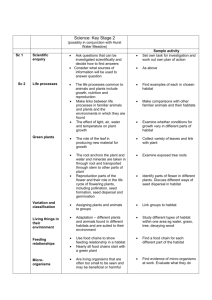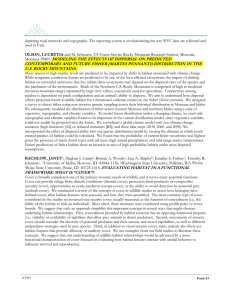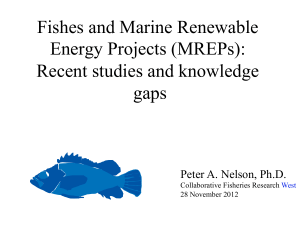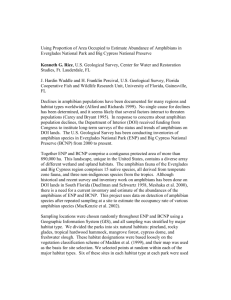Account Template
advertisement
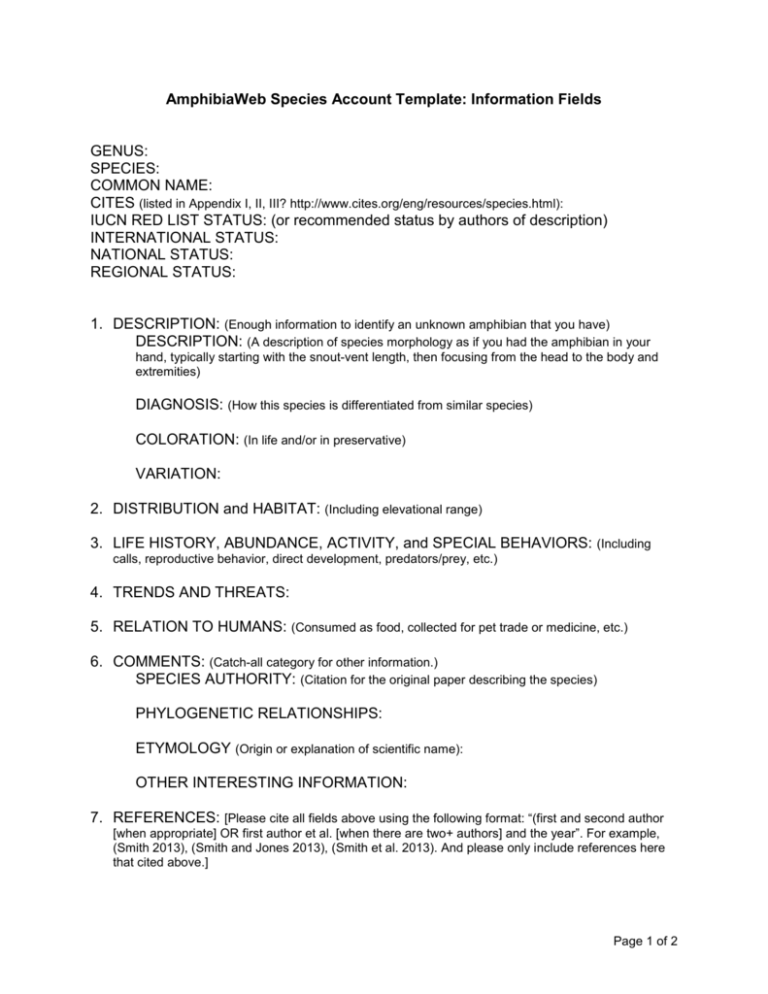
AmphibiaWeb Species Account Template: Information Fields GENUS: SPECIES: COMMON NAME: CITES (listed in Appendix I, II, III? http://www.cites.org/eng/resources/species.html): IUCN RED LIST STATUS: (or recommended status by authors of description) INTERNATIONAL STATUS: NATIONAL STATUS: REGIONAL STATUS: 1. DESCRIPTION: (Enough information to identify an unknown amphibian that you have) DESCRIPTION: (A description of species morphology as if you had the amphibian in your hand, typically starting with the snout-vent length, then focusing from the head to the body and extremities) DIAGNOSIS: (How this species is differentiated from similar species) COLORATION: (In life and/or in preservative) VARIATION: 2. DISTRIBUTION and HABITAT: (Including elevational range) 3. LIFE HISTORY, ABUNDANCE, ACTIVITY, and SPECIAL BEHAVIORS: (Including calls, reproductive behavior, direct development, predators/prey, etc.) 4. TRENDS AND THREATS: 5. RELATION TO HUMANS: (Consumed as food, collected for pet trade or medicine, etc.) 6. COMMENTS: (Catch-all category for other information.) SPECIES AUTHORITY: (Citation for the original paper describing the species) PHYLOGENETIC RELATIONSHIPS: ETYMOLOGY (Origin or explanation of scientific name): OTHER INTERESTING INFORMATION: 7. REFERENCES: [Please cite all fields above using the following format: “(first and second author [when appropriate] OR first author et al. [when there are two+ authors] and the year”. For example, (Smith 2013), (Smith and Jones 2013), (Smith et al. 2013). And please only include references here that cited above.] Page 1 of 2 8. DECLINE CAUSE: (Bold any that apply from the list below) General habitat alteration and pollutants loss Long-distance pesticides, toxins, Habitat modification from and pollutants deforestation, or logging related Predators (natural or introduced) activities Introduced competitors Intensified agriculture or grazing Disease Urbanization Deformity-causing parasitic Disturbance or death from worm (trematode) larvae vehicular traffic Loss of genetic diversity from Prolonged drought small population phenomena Floods Barriers to movement and Mining accidental traps Secondary succession Intentional mortality (over Drainage of habitat harvesting, pet trade or Dams changing river flow and/or collecting) covering habitat Loss of distinctiveness through Subtle changes to necessary hybridization specialized habitat Weakened immune capacity Habitat fragmentation Climate change, increased UVB Local pesticides, fertilizers, and or increased sensitivity to it, etc. SUBMITTED BY (name to appear on the webpage): EMAIL: INSTITUTIONAL AFFILIATION: DATE: Page 2 of 2








